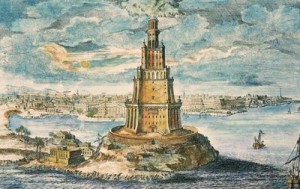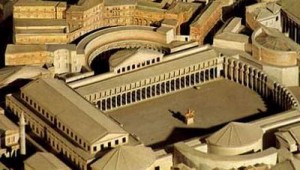If I had a time machine there are many places in the past I would like to visit.
According to scientists, time travel is theoretically possible, but only if we move forward in time, and only for very small increments.
Still, it’s fun to think about the places one could visit if traveling backwards was an option. Let’s play a game. Let’s assume we had a time machine and that we could travel backwards in time to any location and at any point in history.
I can think of five times/places right off.

65 million years ago, + one day. I would love to have been there the day before the meteor struck Earth and wiped out the dinosaurs. Imagine the late Jurassic period: The Diplodocus, nearly 100 feet long, the Stegosaurus with its huge bony back and spiny tail, or the Pterosaurs, giant flying reptiles the size of small planes. If I glimpsed even one of those creatures, what a marvel it would be. And who knows what else may have been running around the neighborhood back then, but has just never been discovered as a fossil? Not to mention the amazing plants that must have existed then–ferns the size of houses and early coniferous trees blanketing the landscape. There’s simply nothing today to compare it to.
Egypt, at the completion of the Great Pyramids of Giza. The most astonishing of the Seven Wonders of the Ancient World, and the only ones still in existence 5,000 years later. They survived because of their sheer size and durability, but what we see today is but a shadow of what they once were. For example, we know that the exterior of the pyramids were clad in smooth limestone.

The enormous newly-built pyramids must have been an even more amazing sight at that point. Their sharp angles would have reflected the strong Egyptian sun from polished surfaces. Even more wondrous would have been the enormous capstones, which were clad in gold. Imagine those shining gold pinnacles flashing in the morning sun. What an awesome and humbling sight that must have been for the common people.
Fast forward 2000 years–Egypt, at the time of Cleopatra. Cleopatra has long fascinated me. After all, what we know about Cleopatra is only a tiny bit compared to what we don’t know. For instance, despite her famed beauty, no paintings or statues exist of her today. There are some rather worn images of her on old coins, but they don’t show us much. I would like to know what she really looked like. Furthermore, I would like to visit her court and observe. After all, she was not only supreme ruler in Egypt, but also worshiped as a goddess. Her will was absolute. She was also the wealthiest person (not just woman) on the planet when she lived. Her wealth in today’s terms would likely exceed $250 billion.

She minted her own coins, set the value of currency, and owned vast tracts of land, crops, and river trade. She received the funds for all business licenses, and a commission on all trade. Her storehouses reportedly were jammed full of gold. Her city, Alexandria, was considered the most advanced and cosmopolitan of all ancient cities. It had the most extensive library, the best universities, and the top scientists, writers, philosophers, and thinkers of its time. Quite a woman, to rule over this amazing empire.

Rome, 115 AD, the reign of Trajan. Rome reached its peak in size and influence during the reign of the emperor Trajan. The city that influenced our modern-day art, education, politics, government, public works, architecture, and philosophy was a marvel by 100 a.d. The populace of Rome not only enjoyed vast public markets with goods from around the world, but running water was abundant and available to nearly all. Enormous public baths with everything from frigidariums (cold pools), to saunas, steam rooms, exercise rooms, dancing, libraries, wrestling, and massage parlors–were available for free (or a very small fee). The streets had public lighting, and entertainment was provided free of charge to enormous crowds. The city was clean (by ancient standards) and its marble buildings and coliseums a wonder to behold. Imagine spending a day wandering about unseen, taking in the feasts, the sheer size and wonder of it all.
June, 1889, the rented “Yellow House” in Arles, France. I would love to have been there, to look over his shoulders, as Vincent van Gogh’s painted “The Starry Night.” The year before he had painted the equally masterful “Sunflowers” series, along with “The Yellow House,” the cafe series, his chair, and many others. But van Gogh painted Starry Night (which depicts the view outside his window at an asylum in southern France) during the day, and completely from memory. He must have worked feverishly as he painted this celestial masterpiece. Whatever his actual state of mind, the painting has a hallucinatory effect. It’s as if the sky is alive with twisting, whirling stars and one very bright moon. What a joy it would have been, to observe him creating those bold, impressionistic brushstrokes.

And there are five of my travels back in time.
Where and when would you go?
© Wade Kingston

